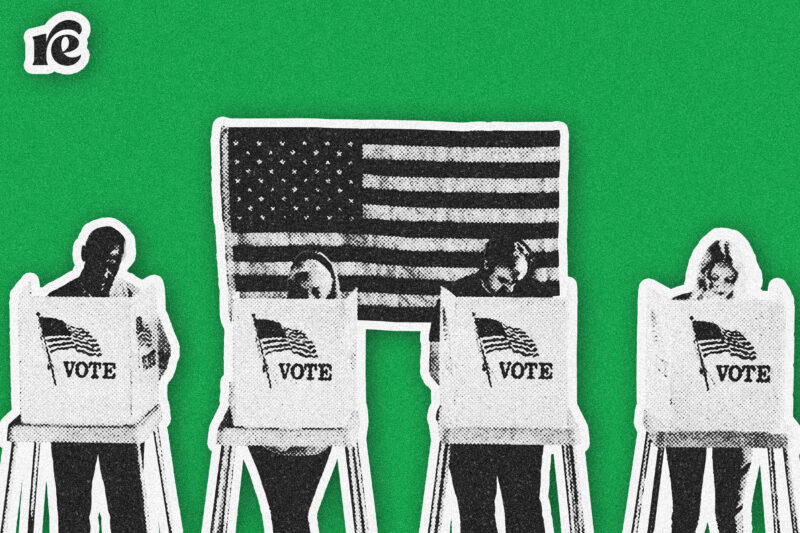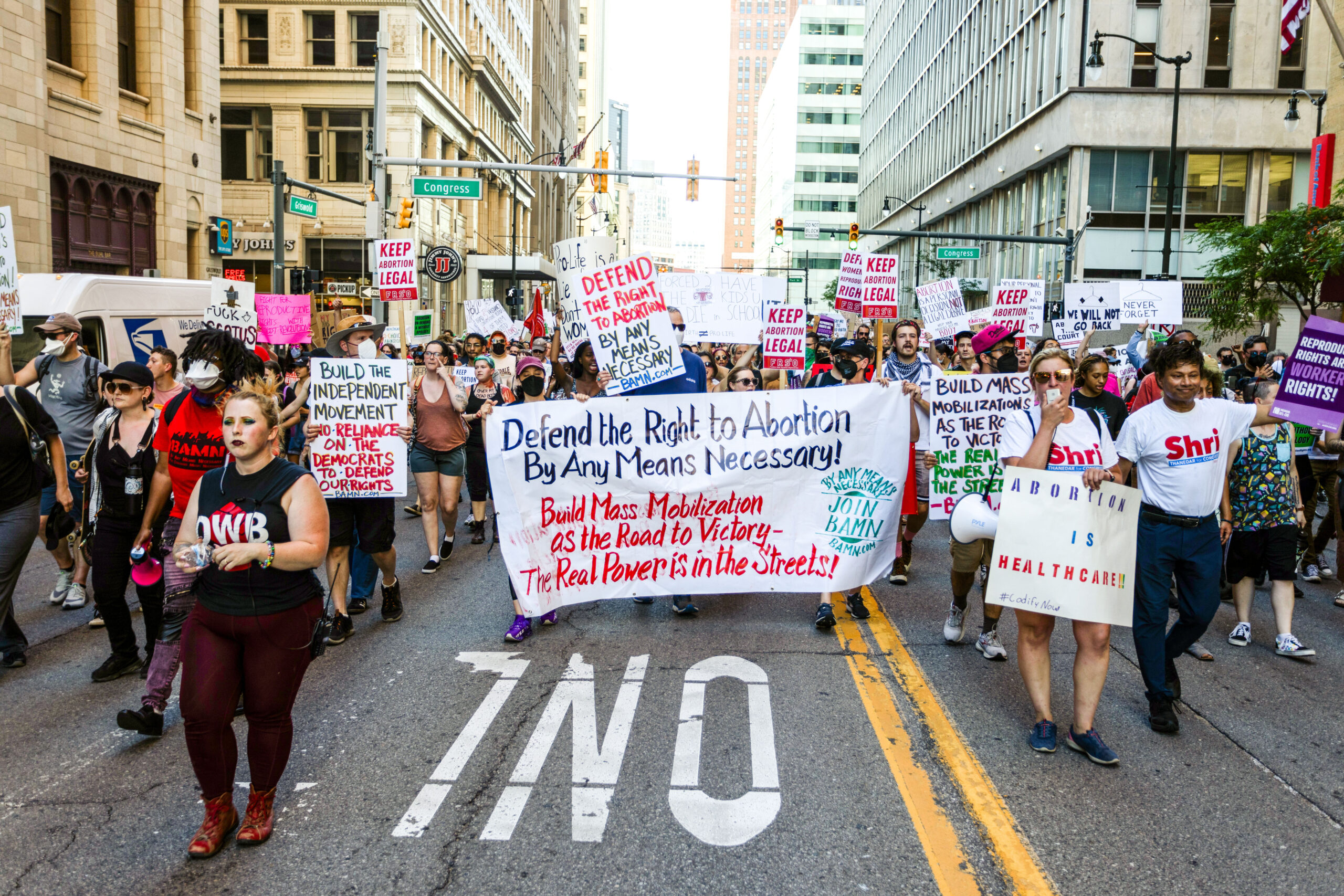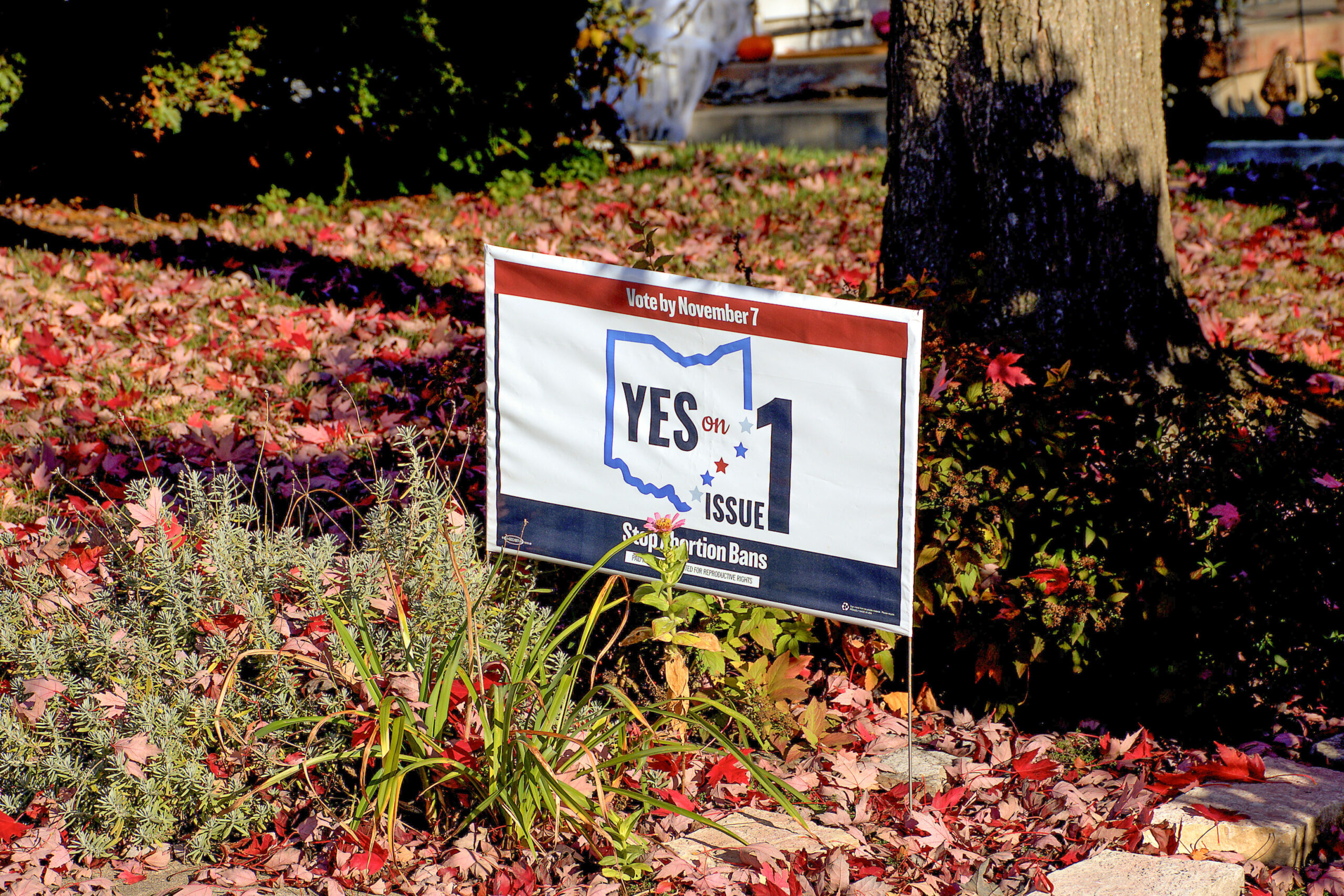What Happens After Abortion Wins at the Polls?
So far, voters’ answer to the question of whether abortion should be legal has been simple. What comes next is more complicated.

On November 5, people in ten U.S. states will vote directly on ballot questions related to abortion access.
In Colorado, Maryland, Montana, Nevada, and New York—five states where abortion remains legal, and some of which have explicit abortion protections—the measures would largely codify existing rights into the states’ constitutions. Colorado’s proposed constitutional amendment would also end a ban on public funding for abortion, allowing Medicaid to cover abortion in all circumstances.
On the other hand, in Arizona, Florida, Missouri, Nebraska, and South Dakota, abortion is either banned or significantly restricted. Voters in these states have the opportunity to take a step toward restoring or improving abortion access. (Though in Nebraska, there are dueling pro- and anti-abortion rights measures.)
It sounds simple—vote to repudiate your state’s abortion ban.
But there’s just one problem: Establishing a new constitutional right doesn’t automatically invalidate all the existing state laws standing in the way of that right. This is especially true in states where legislatures, attorneys general, or governors are opposed to abortion.
“These ballot initiative measures to protect abortion are critical,” said Autumn Katz, associate director of U.S. litigation at the Center for Reproductive Rights (CRR). “But they’re not a magic bullet.”
The reality is that in some states where voters have already cast ballots in favor of abortion access, advocates are still chipping away at abortion restrictions a year or two later.
Kansas
To the surprise of many pundits, Kansas was the first state where voters showed up to overwhelmingly declare their support for abortion rights, just over a month after the Supreme Court’s decision in Dobbs v. Jackson Women’s Health Organization in 2022.
But this ballot measure wasn’t an affirmative one. It was a proposed constitutional amendment that would have ensured there is no right to abortion in Kansas. In defeating the amendment by a 60-40 margin, voters protected the status quo.
However, as in many Midwest states, that status quo was quite restrictive: Abortion is banned after 22 weeks, and there are onerous requirements for patients, including parental consent, a forced 24-hour waiting period, state-mandated biased counseling, and more.
The proposed amendment was a reaction to a 2019 Kansas Supreme Court decision, which held that the state’s constitution guaranteed a right to abortion. By blocking conservative lawmakers’ attempt to change that, voters allowed ongoing litigation against abortion restrictions to continue.
“These ballot initiative measures to protect abortion are critical. But they’re not a magic bullet.”
– Autumn Katz, associate director of U.S. litigation at the Center for Reproductive Rights
And this summer, CRR secured a victory on behalf of Kansas abortion providers: Building on its 2019 decision, the Kansas Supreme Court permanently struck down a ban on dilation and evacuation, or D&E, the most common second trimester abortion procedure. In a second decision, the court struck down a host of targeted regulation of abortion provider (TRAP) laws.
“When we argued this case before the Supreme Court, the state made the argument that the Kansas constitutional right to abortion should also be reversed after Dobbs,” CRR Staff Attorney Alice Wang said. “It was meritless, but especially outrageous in the wake of the ballot initiative for the state to make this disingenuous argument about returning the right to the people, when the people had voted.”
This raises another challenge with ballot initiatives: Even when voters clearly express their support for abortion rights, there is no guarantee that lawmakers will act accordingly. And in Kansas, the legislature continued to pass new abortion restrictions in 2023 and 2024.
CRR continues to represent Kansas abortion providers as they challenge these restrictions, including the forced waiting period, state-mandated counseling, a law requiring abortion providers to tell patients—incorrectly—that medication abortion can be “reversed,” and a new requirement that providers ask patients their reason for having an abortion.
Kentucky voters similarly rejected an anti-abortion constitutional amendment in 2022. There, abortion is banned entirely, but advocates say that as in Kansas, voters’ rejection of the amendment leaves a legal path open to restoring access.
“That’s the great utility of these ballot initiatives,” Wang said. “They’re setting a standard, though advocates still have to enforce it through legislation or litigation.”
Michigan

In 2022, Michigan voters approved Proposition 3, adding a right to reproductive freedom to their state’s constitution. However, the amendment leaves open the possibility that the state can regulate abortion so long as policies are “justified by a compelling state interest achieved by the least restrictive means.” It also left restrictions on the books, including a host of TRAP laws, a parental consent requirement for those under 18, a mandatory 24-hour waiting period, and more.
Along with their affirmation of Proposition 3, voters sent Democratic majorities to both houses of Michigan’s legislature for the first time in 40 years, and re-elected Democratic Governor Gretchen Whitmer.
“I personally believe that Prop 3 was actually the instigator for being able to flip the House and the Senate in the state,” said Lara Chelian, vice president of external operations at Northland Family Planning Centers (NFP), which operates three abortion clinics in the Detroit area.
NFP and CRR had a lawsuit “ready to go” to start the process of rolling back Michigan’s abortion restrictions when Proposition 3 succeeded, Chelian said. But state legislators asked NFP and CRR to wait.
“They said, ‘We can do this. We want to take it up,’” she said.
An entire year went by. In 2023, lawmakers did manage to repeal Michigan’s TRAP laws. But Democrats weren’t able to muster the votes from within their own party to pass a more expansive reform bill, which would have removed the 24-hour waiting period and allowed Medicaid coverage of abortion.
So CRR, representing NFP and Medical Students for Choice, filed suit in February to remove the 24-hour waiting period, biased counseling requirement, and a law banning advanced practice clinicians (APCs) like nurse practitioners and physician assistants from providing abortion care. In June, they won a preliminary injunction blocking these restrictions while litigation proceeds.
“We want to bring Michigan’s antiquated abortion laws in line with what voters have clearly expressed as their strong preference, which is to have these decisions being made by individuals without government interference,” CRR’s Katz said.
Katz added that the 24-hour waiting period, in particular, is burdensome for all patients but disproportionately so for the most marginalized. Having it suspended, even temporarily, has already made a significant difference, Chelian said.
Michigan’s law requires patients to receive physical copies of state-mandated forms 24 hours before their appointment, and though they were not required to pick these forms up in person, they would be turned away on the day of their appointment if they couldn’t access them online and print a physical confirmation. Chelian estimates that at least five patients would have to be turned away and have their appointments rescheduled each week. Now, they can simply show up.
Recently, the American Civil Liberties Union (ACLU) filed suit to lift Michigan’s ban on Medicaid funding for abortion.
But even if these challenges ultimately succeed, they will leave some restrictions in place, including the parental notification requirement. And Chelian has another concern.
“I don’t think people understand this, but if our legislature flips at any time, they can still pass constitutionally unsound restrictions,” she said. “We are in a much, much better place than we were … but it is not a magic potion to have this in the Constitution.”
Ohio

Ohio is the most recent state to have passed an affirmative abortion-related ballot measure. In 2023, more than 56 percent of voters approved a constitutional amendment protecting the right to abortion until the point of fetal viability, a medically variable point that is generally thought to occur between 24 and 26 weeks of pregnancy.
It was a hard-won victory, said Jordyn Close, deputy director of Ohio Women’s Alliance and board president of Abortion Fund of Ohio. Following the strong pro-abortion rights showings in 2022, conservative lawmakers in Ohio were determined to block a similar result in their state. They mounted a special election in August 2023 in which voters were asked to weigh in on a measure that would have made it more difficult to change the state’s constitution.
That August measure, which was unsuccessful, was known as “Issue 1.” So was the abortion rights amendment that was on the ballot in November.
“We had to run a ‘Vote No on Issue 1’ campaign for the August special election and then immediately turn around and tell everyone to ‘Vote Yes on 1’ in November,” Close said. But Ohio voters showed up to support abortion rights—and they did it with a Republican trifecta in control of their state legislature and in the governor’s office, making Ohio the only state to have passed an affirmative measure with a Republican-controlled state government.
Many Republican lawmakers immediately expressed a desire to undermine Issue 1. Ohio Attorney General Dave Yost acknowledged that the state’s six-week abortion ban—which was then blocked by court order—couldn’t be enforced, but said his office would continue to enforce the rest of the state’s numerous abortion restrictions, including a 24-hour waiting period, a 22-week ban, and TRAP laws.
Jessie Hill, director of the Reproductive Rights Law Initiative at Case Western Reserve University School of Law and a cooperating attorney with the ACLU of Ohio, said that to decide which restrictions to tackle first, her team surveyed abortion providers and advocates throughout the state.
“This waiting period law has been around for a really long time,” Hill said. “There were different iterations of it, but depending on which one you’re talking about, it’s been on the books for 20 years or so. There was almost unanimous agreement that this law was the biggest barrier to access,” particularly because it required two in-person visits to a clinic.
In August, a judge temporarily blocked the waiting period and biased counseling requirements. Weeks later, another judge issued a temporary injunction against restrictions on the abortion pill mifepristone, and a law preventing APCs from providing medication abortion.
From a legal perspective, Hill said, Issue 1 has given advocates much stronger footing. But in terms of public awareness, “it’s really hard to keep the momentum going,” she said. “I think the problem is that the groups who are running these campaigns are exhausted after November comes and goes, and funders have spent millions of dollars on this campaign … they thought they were done opening their pocketbooks.”
But advocates want Ohio voters to stay tuned, because this November, they have the opportunity to flip their state’s supreme court—the very court that will make the final rulings on whether abortion restrictions stay or go.
“So many people don’t even know that there is a state supreme court,” Close said. “Even just getting over that barrier, let alone trying to make people understand which judges will be more values-aligned—because judges are expected to be unbiased—there are just so many barriers to the general population, the average Ohioan, feeling well-informed.”
“In addition to that, especially this year, with everything that’s happening at the top of the ticket, there is a very deep sense of voter apathy, which is completely understandable,” Close added. “There’s a genocide going on … and abortion funds can’t support people in the same way that we have.”
To counter the inherently “extractive” nature of electoral work, Close said Ohio Women’s Alliance works to be a presence in the community at all times—not just when an election is coming up.
“It is really upsetting to me to think about going into particularly Black and brown communities, and asking them to vote without showing up for things that they need,” she said. “So we really prioritize … making sure that we’re building partnerships with other direct service resources so that we can be a political home for people to get the things that they need, so that they do feel empowered to be more civically engaged.”
Looking ahead to 2025
Though Katz declined to share CRR’s plans for future litigation, she said they are “certainly looking very carefully at some of the pending ballot initiatives that are in states that have many restrictions on the books that make it difficult or almost impossible for patients to access care.”
However, another limit of citizen-led ballot initiatives is that the process doesn’t exist in every state.
“In those states that do have citizen-initiated ballot petitions, it is incredibly important for people to vote and to be able to make their voices heard,” Katz said. However, “there really is a need for federal legislation that would protect our bodily autonomy and our ability to make reproductive decisions for ourselves.”
What shape federal legislation might take is still a question mark. Vice President Kamala Harris has been largely mum as to her specific plan to restore abortion rights since becoming the Democratic presidential nominee. But if current ballot measure campaigns are any indication, there will likely be disagreement within the reproductive rights and justice movements about the best path forward in the event Harris is elected.
State-level ballot initiatives have already been controversial within the movement because several protect abortion rights only until the ill-defined point of fetal viability. Many advocates say this leaves some of the most vulnerable abortion seekers unprotected, and dooms the reproductive rights movement to repeat its past mistakes.
“In those states that do have citizen-initiated ballot petitions, it is incredibly important for people to vote and to be able to make their voices heard.”
– Autumn Katz
In Ohio, for example, reproductive justice groups like Ohio Women’s Alliance didn’t want to see a viability ban enshrined into the state constitution, but they ended up campaigning for the measure anyway.
“We experienced an Ohio that did not have access,” Close said. “Our six-week ban was in effect for 82 days, and it was absolutely terrible. We very clearly saw what would happen if we did not have any level of protection, and so I think that changed the narrative for us.”
A ban on abortion at any point in pregnancy is still a ban, Close said. But shifting the broader movement’s priorities in line with that value would require culture change work within and outside the movement.
“I’ve seen a lot of the heat being turned on organizers that are just trying to make things better in their states that are faced with the choice of telling people that they have to continue their pregnancies or campaigning to make their state 50 percent better,” Close said. “I think that the focus on the viability clauses is pointed at the wrong group of people. In my opinion, it speaks to a need for electoral campaign reform.”
